Łabunie
Borough of Łabunie, Zamojski District, Lubelskie VoivodeshipType of place
Private enterprise premises.Information about the crime
During the Second World War, a German military airport operated in Łabunie in the Zamość district. The construction of wooden barracks for the German army was commissioned to the Czechoslovak company “Skala-Smolka i Wawreczka”. Construction works began in the spring of 1941 and lasted about two years. Local people and several hundred Jews from Poland and other countries were employed to build the barracks.
“In 1940 a Czechoslovakian company came to Łabudnie to build an airport and barracks. […] The construction of the airport and barracks at the airport was named “Łabunie No. 1”. The other building structures, called “Łabunie No. 2”, were located next to the former sawmill on the southern side of the road from Zamość to Tomaszów. […] I know that the barracks [Łabunie No. 1] were intended for German soldiers who, as it turned out later, were preparing to attack the Soviet Union.” […] (testimony of Kazimierz S, pp. 272-274)
Witness Władysław R. remembered that Jewish prisoners arrived in Łabunie in 1942. “I don’t remember the exact date. I think it was in 1941 or 1942. Jews from Czechoslovakia were placed in one of the barracks, which was previously occupied by the army. This barrack was 15 meters long and about 10 meters wide. There was a fence around it, but I don’t remember if it was barbed wire. […] There were entire Jewish families with children. At first, they were allowed to walk around the surrounding villages. As far as I remember, the group of Jews staying in this camp consisted of about 70 people, including children. […] As far as I can tell, this camp lasted from spring to autumn 1942.” (file 221/Dz/68 p. 240)
About 600 people (200 men, 350 women and 50 children) passed through the labor camp. A group of Jews from Łabunie was also forced to work as slaves at the airport. According to Kazimierz S., who testified before the District Court in Zamość, there were also Jews from Western Europe among the camp prisoners: “The workers in both construction sites were treated severely, the Jews in particular. They were beaten, kicked and mistreated. After the Germans attacked the Soviet Union, some barracks were selected on both construction sites for the Jewish population to live there. […] On construction site No. 2, about two hundred people, including men, women and children, were placed in four or five barracks. The group in “Łabunie No. 2” consisted of Jews from France, Czechoslovakia, Austria and Germany. […] (testimony of Kazimierz S, file 244/Ds/68 pp. 272-274)
Aniela K.: “There were two barracks next to our house. The Jews were brought there. I don’t remember when it was. The Jews probably came from Czechoslovakia. I don’t remember how many people were there and how long it lasted. I know that there were also women and children in the camp. ” (file 224/Dz/68 pp. 247-248)
Several dozen Jews were murdered in front of Polish airport workers. They were delegated to dig the grave after the execution. The camp was liquidated in the autumn of 1943.
“Before the Germans arrived, the Czechs for whom we worked ordered us to dig a hole not far from the barracks, and then move away to the construction site. After that, they brought the Jews to this place, one by one. They were shot over the pit. The entire execution lasted about 2.5 hours. I saw it from the window of the barracks. Out of the group of 75, I knew three Polish Jews. They were called Gortler Szloma, Perla Gortler and Mindla Gortler. I knew them because they lived in Łabunie. I didn’t know the others. After the execution I also took part in burying the victims, on the orders of the Czechs. The Germans who carried out the execution immediately left.” (testimony of Bolesław W file 14/Dz/66. p. 48)
Franciszek M. provides the dimensions of the pit in which the victims of the massacre were buried: “Before the execution of these Jews, the Czechs for whom we worked ordered us to dig a pit at a distance of about 50 meters from the construction site, about 3 meters long, 2 meters wide and about 1.5 meter deep.” (testimony of Franciszek M. file 13/Dz/66 p. 46)
“I didn’t see the liquidation of the camp. I know from other people’s stories that one day in the autumn, two Gestapo men came, I don’t know from where. That’s how they carried out the execution: they stripped everyone naked, took all valuables like rings, and even pulled out gold teeth, and then shot the Jews in the back of the head. Victims had to lay in layers on top of each other. ” (testimony of Władysław R. file 221/Dz/68 p. 241)
“Kazimierz S. gave a shocking account in 1968: “The day before the camp’s liquidation, the Czechs [employees of the Czech company responsible for the construction of the airport] ordered laborers to dig a large hole near the former barrack. The next day, around 9 AM all the Jews were summoned to the former sawmill together with their wives, children and possessions.
One of the Germans from SS formation gave a speech. Then all the Jews went to the kitchen one by one, where they were stripped down to their underwear. Some of the children were completely naked, some of them in undershirts. The Germans took clothes and all valuables, and even tore out gold teeth from their mouths. I saw faces covered in blood and at first I thought they had been beaten, but it turned out that their gold teeth had been torn out just before their execution.
I watched this and the execution itself from a distance of 10-15 meters. I was hiding in a garage. The pit was located a few meters from the kitchen, from where the prisoners came out in small groups and were shot in the back of the head by one of the Germans.
At first, they came into the pit down the ladder. As the number of the murdered grew larger, the ladder was pulled out. Later, as the victims approached, the same German shot them in the back of the head, and they fell into the pit. The German was drunk, he was stumbling and didn’t always kill them right away. Then he ordered another person waiting for execution to go down the pit and arrange the victim so that one body would lie on top of the other. Prisoners with their families, i.e. husband, wife and children, left the kitchen to the execution site. It’s difficult to say how many women or children died then, I only counted the number of people. When I counted to 82, a Jewish woman, about 30 years old, came to the pit with a small child in her arms and said something to the executioner, apparently she was asking for pity for the child. I didn’t hear what he said to her. He kicked her, grabbed the baby out of her hands and shot her in the head. She fell down the pit. Then he tossed the baby and fired. The child fell down on the other bodies. I don’t know if it was alive or if the German hit it with his shot. I experienced such a shock that I left the hiding place and ran home. I don’t know how many prisoners were murdered. The execution lasted from around 10 am to around 14. I know that the Germans who carried out the execution made an order to cover the bodies with lime and then with earth. This is how the labor camp of the Jewish population in Łabunie No. 2 was liquidated.” (testimony of Kazimierz S., file 244/Dz/68 pp. 272-274)
Edward R. from Wólka Łabuńska, a worker employed in the construction of the airport, was also the eyewitness of these events. His account is especially important as it contains the dimensions of the pit in which the remains of the victims were buried: “I was present during the mass extermination that took place in November 1943. I remember that one morning in November (I don’t remember the exact date), the Czech crew ordered us to dig a large hole, approx. 4 x 2 m in size. […] Already at night, the Czechs surrounded the barracks, which meant that something was going to happen. In the morning we found a wounded Jew at the gate, who had been shot when he was returning from a night expedition in search of food. He was writhing in pain, but no one cared about him.
The German, who came from Zamość, gathered everyone in the kitchen and gave them a speech. It lasted for half an hour. Then he left and locked everyone inside and the Czechs were taking Jewish belongings from the barracks. Then everyone was led out of the kitchen to the so-called gatrownia. There, the Jews were stripsearched. The Czechs stripped them naked, took valuables, and even pulled out gold teeth. After that, the Czechs were bringing 5 people at the time. They had to lie face down in the pit, and a German from Zamość shot them in the back of the head. This is how he killed them all. After each group of ten he would drink a shot of vodka and smoke a cigarette.
He used only one bullet for each victim, regardless of whether he hit or missed. Among the victims were women and children. I know that one of the prisoners was a Czechoslovakian doctor who, after the German’s speech, used poison and died in the square during the execution. He and the wounded Jew lying in front of the gate were also thrown into this common pit. I remember that among the murdered there was a family named Kamiński. I had contact with them when I was in the camp. They said that their names were Kamiński and that they were already Catholics. I saw them going to execution, leading their five-year-old son between them. This is how the camp was destroyed. The German troop left Zamość, taking things and valuables taken from prisoners. The pit was covered with earth.” (file 223/Dz/68 pp.245-246)
In the accounts of witnesses testifying before the Polish judiciary after the war, there is information about the exhumation of the remains of Jews murdered in Łabunie. However, there is no information on where the remains were buried: “The bodies were exhumed a few years ago. I don’t remember the date, I only know that when the foundations for the State Machine Center hall were dug, bones were found. The Civic Militia in Łabunie were notified and they ordered the removal of the bodies. I don’t know where they were taken.” (Testimony of Władysław R., July 1968, file 221/Dz/68 p. 241)
“The bodies of the victims were exhumed a few years ago, as far as I remember it was in 1964. During the digging of the foundations for the state-owned company building human bones were found. Some committee took care of it and took the bodies, but I don’t know where.” (testimony of Edward R., July 1968,file 223/Dz/68 p. 246)
The events in Łabunie are summarized in the camp card from the Chief Commission for the Examination of German Crimes collection from December 1968. However, there is no information on the subsequent exhumation: “When the airport was already built, the Germans carried out a mass execution of the Jews. Here’s what happened: in the evening (no date) of 1943, SS arrived in two taxis. They were to carry out the execution. They were so drunk that they could barely stand. They brought Poles from the village of Łabunie and ordered them to dig pits. When the pits were ready, the Germans ordered the Jews to approach the edge of the pit and shot them in the back with machine gun bursts. Most often, the Jews would approach the edge of the pit with their entire families. Apparently they wanted to die together. Only one bullet was intended to kill each Jew. The Germans didn’t care if the shot was effective. Some Jews were still alive when they were pushed into the pits with rifle butts. Before throwing each Jew into the pit, the Germans inspected them and took away rings and other expensive items that they found. The inhabitants of Łabunie say that the earth moved for 3 days in the place where the Jews were buried.” (IPN Lu 501/76)
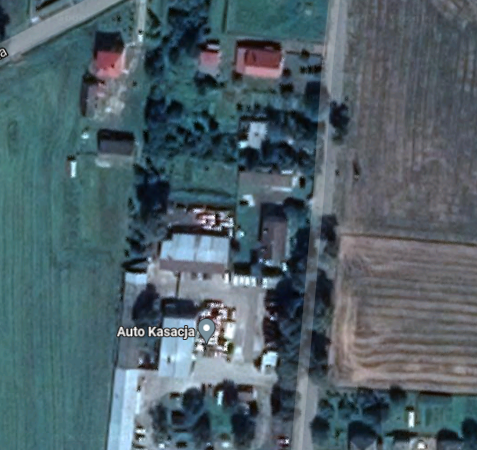 Łabunie teren obozu mapa satelitarna
Łabunie teren obozu mapa satelitarna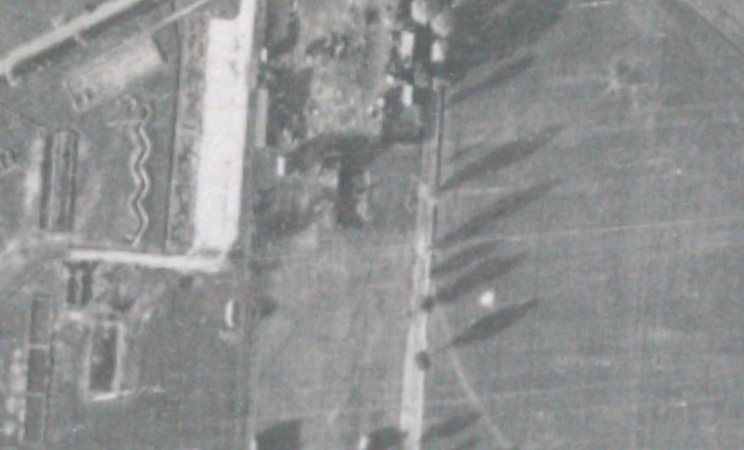 Łabunie teren obozu na zdjęciu lotniczym z X 1944
Łabunie teren obozu na zdjęciu lotniczym z X 1944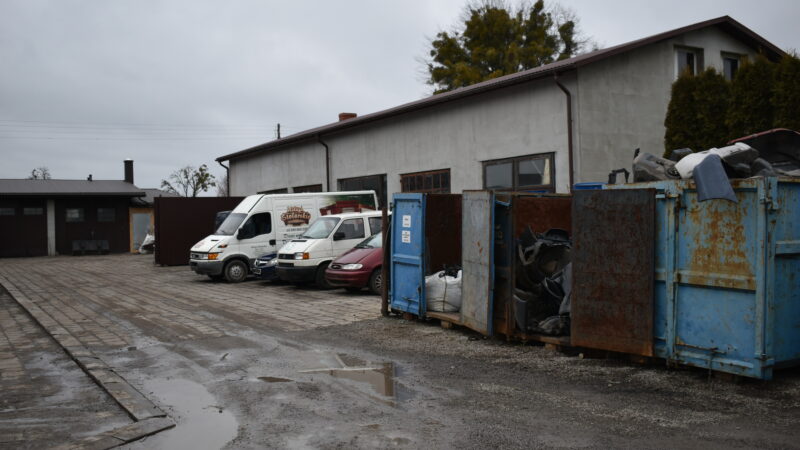 Łabunie zdjęcie lokalizacji 1
Łabunie zdjęcie lokalizacji 1Sources
Contact and cooperation
We are still looking for information on the identity of the victims and the location of Jewish graves in Łabunie. If you know something more, write to us at the following address: fundacjazapomniane@gmail.com.
Bibliography
IPN BU 2448/605 part 1 of the Questionnaire of The Chief Commission for the Examination of German Crimes in Poland and The Regional Commission for the Examination of German Crimes in Warsaw, collected in the years 1968-1972, Surveys on lubelskie Province- VIII, Zamość district: surveys.
IPN Lu 501/76
The Register of Killing Sites and Crimes committed by the Germans in Poland between 1939 and 1945, Zamojskie province, Warsaw 1994
We have collected the materials about this village thanks to the funding provided by the International Holocaust Remembrance Alliance as part of the project “The rural Holocaust. Collecting and safeguarding the never recorded testimonies 100 forgotten Jewish graves 2021-2022” and also thanks to the support of the Embassy of the Federal Republic of Germany in Warsaw.
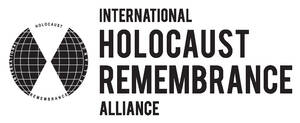
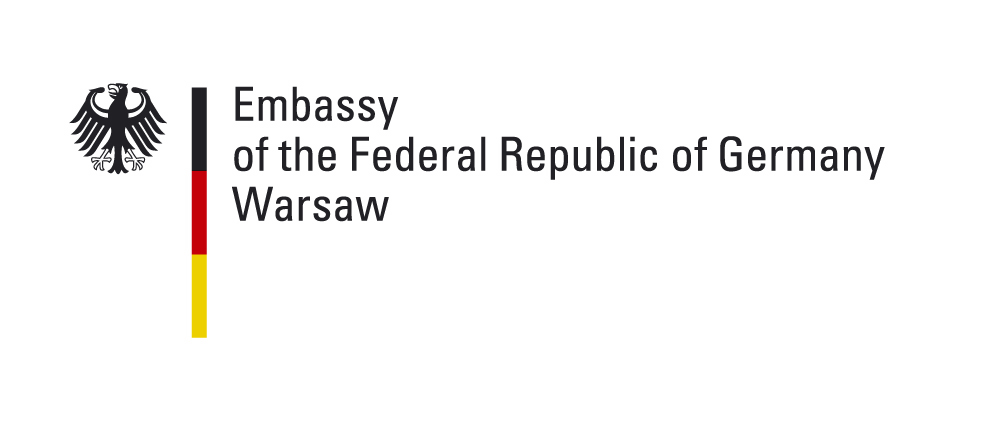
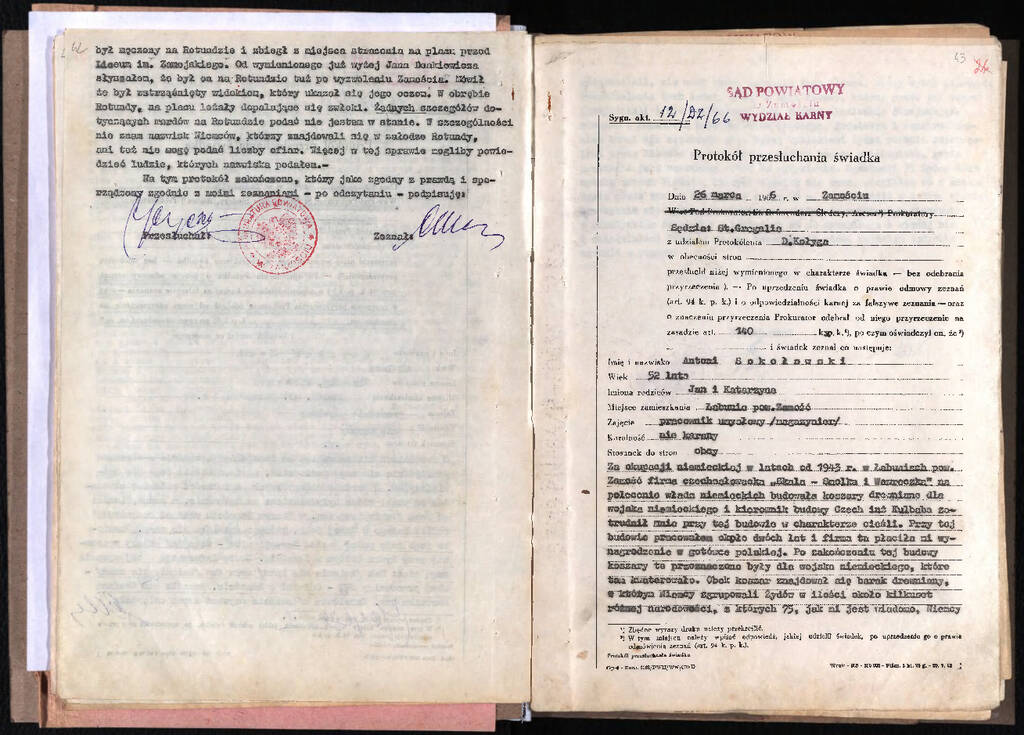 Akta dotyczące zbrodni hitlerowskich - Łabunie
Akta dotyczące zbrodni hitlerowskich - Łabunie